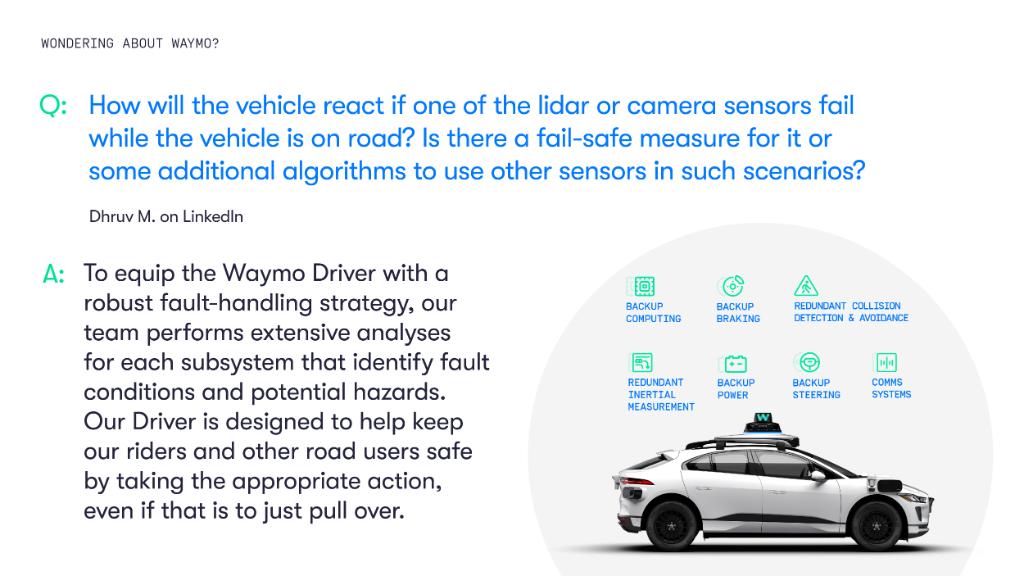I still find it somewhat difficult to believe that people will lease those cars with lots of stuff on top instead of a normal looking Tesla (assuming both are available).
To compete with Tesla on cost - they will have to get a cheapo car made by GM or someone like that.
I doubt anyone cares what their taxi looks like. In fact, lots of visible sensors might increase the comfort level. Leasing is a ways off, IMHO.
This only holds true until Cruise starts offering rides to public in SF. IIRC, they are close to doing that - unlike Waymo.
I don't think they're that close. Did you see their fully driverless demo? A few hundred feet on a straight street with no other traffic. You have to start somewhere, of course, but Waymo's first driverless demo was much more impressive. In 2015!
Cruise needs remote operator assistance every few minutes. Kyle Vogt (who sometimes participates in Reddit threads, btw) says that's OK. 15 seconds every 5 minutes is 5% duty cycle, so each remote operator could in theory mange 20 cars vs. Uber's 1:1 ratio. It's a good point, and I'm glad they're trying it, but I doubt they can even do 2:1 safely today.
Basically, Waymo derives its DNA from the old DARPA projects. So, they are going slow and steady - choosing the easiest place first. Given Google's deep pockets, an expected strategy. Cruise is more daring (with little to lose, in a way, before GM acquire).
It's really not timid vs. daring. Cruise is directly targeting Uber's city center market. The value proposition is clear, but it's difficult technically and the TAM is limited. I've seen 30b for the total US rideshare market; city center is a subset of that.
Waymo is swinging for the fences by targeting car replacement. US personal vehicle spending is close to 2 trillion/year. Of course they're not targeting the whole thing from day one -- they'll start by picking off 2nd and 3rd cars. And they can't deploy simultaneously in all 276 US metro areas, so they might as well start in ones with wide roads and good weather
Waymo's business model is much more daring than Cruise's (which in turn is more daring than Tesla's fake it 'til you make it approach). People identify with their cars and may refuse to give them up no matter how many Powerpoint talks Tony Seba gives. But if Waymo pulls it off? If they actually displace a meaningful chunk of Phoenix area personally owned vehicles? That's beyond a home run. They have to actually pull it off, though. If they shift toward a Cruise-type Uber replacement model we'll know they failed.




